A recent investigation by CBS News’ “60 Minutes” has highlighted a significant issue: organized crime rings, often operating from overseas, are using stolen identities to steal billions of dollars from the U.S. Federal and State programs. These sophisticated fraud schemes specifically target public assistance initiatives, taking advantage of digital vulnerabilities and overwhelmed systems. The COVID-19 pandemic accelerated the delivery of relief funds, presenting new challenges for security systems still being implemented.
As these cyber-enabled crimes grow in complexity and scale, Public Sector organizations must evolve their defenses. HUMAN Security offers a modern solution that aligns with Public Sector standards and frameworks, like the NIST Cybersecurity Framework, to protect against automated fraud, account takeovers and bot-driven exploitation.
The Expanding Threat Landscape: Government Fraud at Scale
The fraud rings described in the CBS report do not fit the Hollywood stereotype of a lone hacker in a basement. These are industrial-scale operations run by criminal syndicates that:
- Use stolen or synthetic identities to apply for public benefits such as unemployment insurance, COVID relief, food assistance and housing vouchers.
- Leverage bots and automated scripts to rapidly test stolen credentials against Government login portals.
- Host phishing websites and fake document generators to fool verification systems.
- Exploit the lack of robust digital defenses in legacy Public Sector infrastructure.
At the height of the pandemic, the U.S. prioritized the rapid distribution of trillions in relief funds to support individuals and businesses in crisis. In the urgency to deliver aid quickly, some agencies adjusted standard fraud controls—creating unforeseen opportunities for bad actors. According to the CBS report, an estimated $280 billion was lost to fraud, with an additional $123 billion categorized as wasted or misused.
The tactics employed have now evolved into permanent tools of financial exploitation. Many cybercriminals continue to exploit social welfare and Government programs by leveraging automation and AI. Fraud isn’t slowing down—it’s scaling up.
Why Public Sector Agencies Are Attractive Targets
Government systems present a unique target profile for attackers due to a combination of high-value data, broad user bases and strained IT resources. Here’s why the Public Sector is particularly vulnerable:
1. High Payout Potential
Each successful fraudulent claim can yield thousands of dollars in benefits. Fraudsters often operate in bulk, submitting thousands of applications using stolen identities.
2. Legacy Infrastructure
Many State and Local agencies still operate on outdated software stacks that lack modern bot detection or behavior-based threat analysis.
3. Lack of Real-Time Monitoring
Fraudulent applications often go undetected until after funds are dispersed. Manual review processes are insufficient to handle the volume of claims.
4. Increased Script & API Vulnerabilities
Fraudsters exploit front-end vulnerabilities, such as JavaScript manipulation or misuse of APIs, to simulate real user activity, bypass verification checks and deploy fake documents.
HUMAN Security: A Modern Solution for a Modern Threat

HUMAN Security specializes in protecting organizations from automated attacks, fraud and abuse by distinguishing between real users and malicious bots. HUMAN’s solutions are uniquely positioned to help Public Sector agencies address the specific types of fraud exposed by 60 Minutes.
1. Bot and Automation Mitigation
Fraudsters frequently use bots to submit applications at scale, probe systems for weaknesses and conduct credential stuffing attacks. The HUNAN Defense Platform analyzes over 20 trillion digital interactions weekly to identify real-time anomalies.
Through behavioral analysis, device fingerprinting, and machine learning, we can help public sector clients:
- Detect non-human interaction patterns
- Prevent fake accounts from being created
- Block bot-driven denial-of-service or overload attempts
2. Account Takeover & Credential Abuse Defense
Many fraud schemes begin with access to a real person’s Government credentials. We prevent account takeovers by identifying compromised credentials in real time and helping clients stop unauthorized login attempts.
Our Application Protection Package also integrates into public-facing login portals to block brute-force attempts and detect unusual login behavior.
3. Fake Identity and Synthetic Account Prevention
Fraudsters use fake IDs or generated synthetic identities to bypass identity checks. Our behavior-based analytics distinguish real users from fabricated personas—stopping fake account creation before it starts.
4. Real-Time Threat Intelligence:
By continuously monitoring emerging threats, we equip Public Sector clients with up-to-date information to counteract evolving fraud tactics.
5. Integration with Public Sector Frameworks:
Leading-edge solutions that align with standards like the NIST Cybersecurity Framework, HUMAN facilitates seamless integration into existing Government infrastructures and helps public sector clients with compliance and regulatory requirements.
Real-World Benefits to Government Agencies
By adopting fraud protection solutions, public agencies can:
- Minimize Fraud Risk: Real-time prevention minimizes the risk of sending funds to bad actors.
- Protect Citizens: Reduce identity theft and unauthorized access to sensitive citizen data.
- Build Trust: Demonstrating robust cybersecurity fosters public trust in digital Government systems.
- Streamline Compliance: Meet modern standards like PCI DSS 4.0 requirements 6.4.3. & 11.6.1 and NIST CSF with confidence.
- Save Taxpayer Dollars: Every fraudulent dollar blocked is money that can be returned to real beneficiaries or saved for future programs.
A Call to Action for Government Leaders
The fraud revealed in the CBS 60 Minutes report isn’t an isolated event—it’s a warning sign. Digital transformation has accelerated across public agencies, but fraud defenses haven’t always kept pace.
Government leaders must take a proactive stance by:
- Modernizing fraud detection capabilities
- Closing visibility gaps across digital infrastructure
- Adopting behavior-based, real-time defenses like HUMAN Security
- Aligning security strategy with established frameworks (NIST, PCI DSS)
Fraud is no longer just a compliance risk—it’s a national security issue. As public trust and taxpayer funds hang in the balance, Government agencies must embrace modern, intelligent and automated defense systems to keep fraudsters out.
Carahsoft Technology Corp. is The Trusted Government IT Solutions Provider, supporting Public Sector organizations across Federal, State and Local Government agencies and Education and Healthcare markets. As the Master Government Aggregator for our vendor partners, including HUMAN Security we deliver solutions for Geospatial, Cybersecurity, MultiCloud, DevSecOps, Artificial Intelligence, Customer Experience and Engagement, Open Source and more. Working with resellers, systems integrators and consultants, our sales and marketing teams provide industry leading IT products, services and training through hundreds of contract vehicles. Explore the Carahsoft Blog to learn more about the latest trends in Government technology markets and solutions, as well as Carahsoft’s ecosystem of partner thought-leaders.

 One step towards achieving cybersecurity is observability. In a time when education leaders are asked to do more with less, observability allows institutions to understand what is happening within their networks and why. Observability should be used to empower education IT teams and in conjunction with active monitoring platforms, which will help them understand the full scope of the data in their network management systems to then apply actionable intelligence to solve issues. When exploring this data, IT staff should consider these questions:
One step towards achieving cybersecurity is observability. In a time when education leaders are asked to do more with less, observability allows institutions to understand what is happening within their networks and why. Observability should be used to empower education IT teams and in conjunction with active monitoring platforms, which will help them understand the full scope of the data in their network management systems to then apply actionable intelligence to solve issues. When exploring this data, IT staff should consider these questions: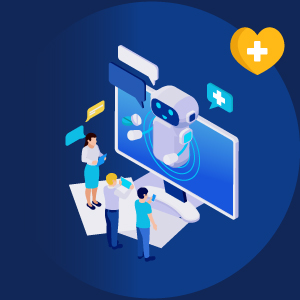 AI can significantly reduce the administrative burden for medical providers by automating routine tasks and increasing bandwidth for front line staff to complete other medical duties. A hallmark capability for AI is analyzing data which it can aggregate from wide pools of information to suggest electronic health record (EHR)-based interventions, predict possible future patient ailments and offer a more unified, comprehensive picture. In a post-COVID-19 world, AI healthcare data applications offer the extremely relevant and desired ability of anticipating future public health crises through research and analytics. These AI forecasts can accelerate understanding for policy creation, reinforce healthcare resources and provide precision public health.
AI can significantly reduce the administrative burden for medical providers by automating routine tasks and increasing bandwidth for front line staff to complete other medical duties. A hallmark capability for AI is analyzing data which it can aggregate from wide pools of information to suggest electronic health record (EHR)-based interventions, predict possible future patient ailments and offer a more unified, comprehensive picture. In a post-COVID-19 world, AI healthcare data applications offer the extremely relevant and desired ability of anticipating future public health crises through research and analytics. These AI forecasts can accelerate understanding for policy creation, reinforce healthcare resources and provide precision public health.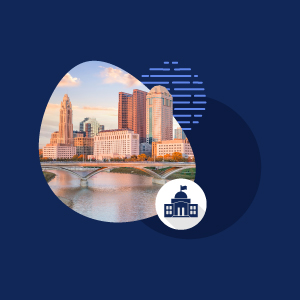 Utilizing a single platform that connects automation of other tools into that platform helps agencies get real-time data reporting and addresses risk within the organization. By using multiple endpoint management and security tools in a single platform, agencies can streamline their operations, reduce costs and improve their overall security posture.
Utilizing a single platform that connects automation of other tools into that platform helps agencies get real-time data reporting and addresses risk within the organization. By using multiple endpoint management and security tools in a single platform, agencies can streamline their operations, reduce costs and improve their overall security posture. Digital Transformation Within Institutions
Digital Transformation Within Institutions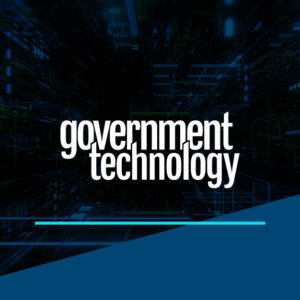 Having an Automation-First Mindset
Having an Automation-First Mindset 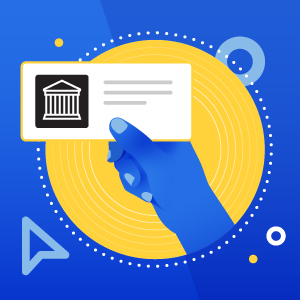 Personalization and Accessibility
Personalization and Accessibility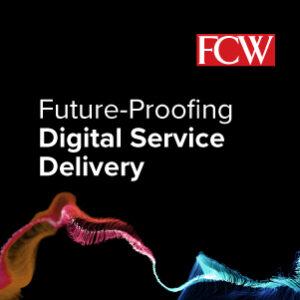 The Benefits of Treating Employees Like Customers
The Benefits of Treating Employees Like Customers Are People at the Center of Your Modernization Efforts?
Are People at the Center of Your Modernization Efforts? How to Move DevOps from Disarray to Unity
How to Move DevOps from Disarray to Unity